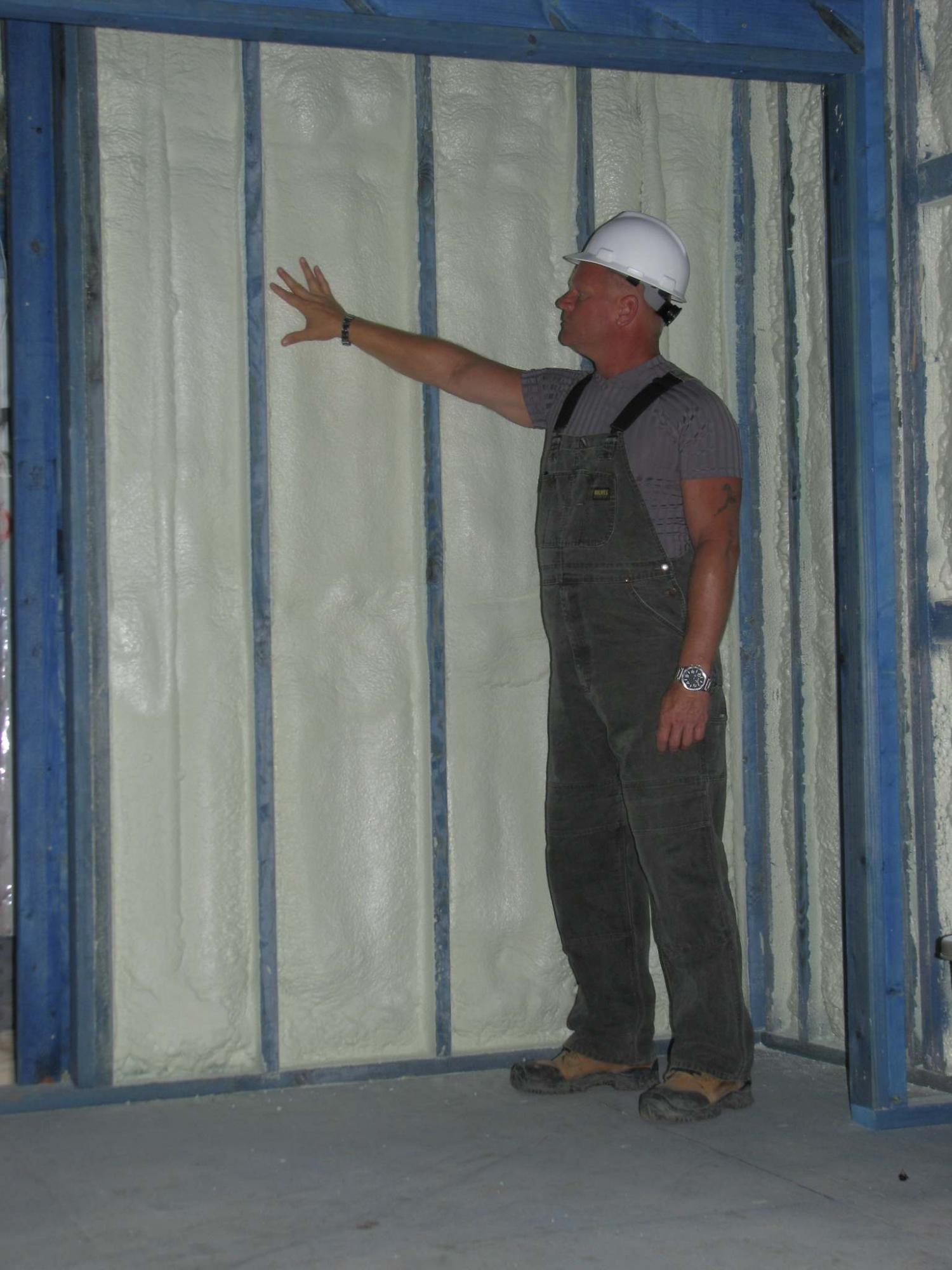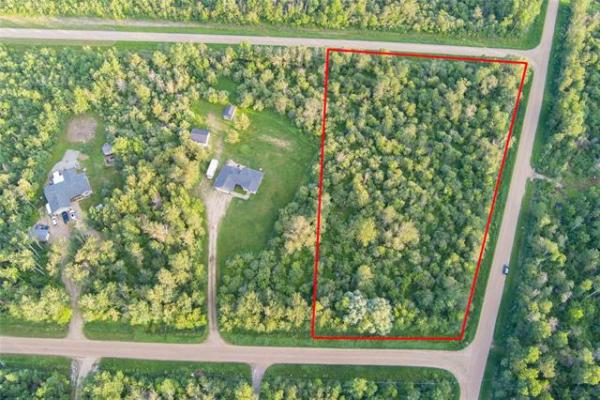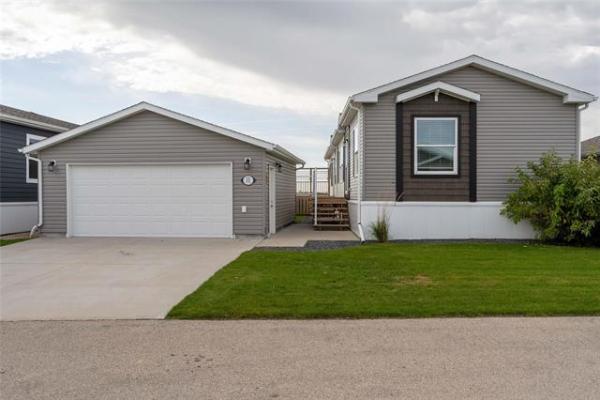
Photo courtesy of The Holmes Group
The benefits of spraying insulation on the interior are the lack of digging and potential collapse, as well as all the issues with covering, flashing and waterproofing exterior stones.
Question: I found an article you previously wrote and it seems consistent with my research. I am just wondering if you would recommend using closed cell spray foam on the exterior of our stone foundation. We are in Ottawa. The plan was originally to excavate, repair, add waterproofing, dimple membrane, rockwool CB80, furring strips through to foundation, then a protective covering.
I have recently read about the use of spray foam on the exterior. So, my revised plan would be to excavate, repair, add spray foam insulation, dimple membrane, then parging.
Are you able to offer any advice?
Thank you, Casey Mac.
Answer: Retrofitting insulation to the outside of a foundation has some specific challenges, which may not be necessary with a more typical interior application. It may be possible to accomplish your goal, but beware that it will be a significantly more costly and difficult option than doing it from the interior.
Adding insulation to any foundation, years or decades after it has been built, can pose various challenges. Many of these are due to older designs that are not fully compatible with thick layers of insulation added either inside or outside. To compound this, older stone foundations, like in your home, have very uneven surfaces that make installation of many types of insulation difficult. Your original plan would only be feasible if you were to add a complete layer of mortar, also known as parging, to the entire exterior of the foundation below grade. This would allow proper installation of the semi-rigid waterproofing membrane that you had planned. Without this smoothing layer, the membrane would not properly conform to the uneven stones, leaving large gaps where moisture could still seep through the foundation. Installation of sprayed-on polyurethane foam, after repointing the outside of the stone, would be a better option.
Spraying the foam directly to the outside of the stone foundation is a definite option, but will require quite a bit of planning for the further steps needed. The main concern is moisture that will run down the house walls and foundation during rains. This moisture must be shed away from the house to prevent intrusion into the foundation and house walls. Normally, the siding will project slightly over the foundation, or a small trim board or flashing will be installed at the bottom. This prevents leakage into the top of the foundation, or between the foundation and bottom of the wall. Because you will be increasing the thickness of the foundation walls by several centimetres, due to the insulation and membrane, it will have to be protected.
The moisture protection for the top of the insulated stone wall will require a wide flashing, which should have the top section installed underneath the bottom of the siding. This will require partial removal of the siding, to effectively install the metal flashing. Also, the flashing will have to be custom bent, sloped, and properly secured to ensure wind-driven rain and snow is prevented from seeping in. Once this difficult task is complete, the bottom of the siding will have to be re-installed or repaired.
It may not appear that adding a flashing is that difficult a task, but if it is done poorly, not only is foundation leakage a possibility, the bottom of the house wall and siding will be at risk of moisture damage. In the worst-case scenario, water leaking between the stone foundation and the new foam insulation will compromise the integrity of the insulation. Also, the entire exposed surface of the insulation above grade must be covered.
The foam is not resistant to ultraviolet light, so the sun’s rays directly on the new material will cause it to quickly deteriorate. This must be completely covered with moisture resistant material, due to its proximity to grade.
This covering will increase the thickness of the new assembly, making the flashing even wider at the top.
Your choice of whether to continue with an exterior application of insulation should include other variables, as well. There is much debate about the wisdom of doing exterior excavation on older stone foundations. If the mortar is badly deteriorated, there will be soil that has seeped in between the individual stones, in its place. Also, if the stones have moved, the undisturbed soil outside the foundation may provide the most stable support for the foundation. Once removed, there will be a much greater chance of further, sudden movement, which could have catastrophic consequences. Partial collapse of the foundation is always a possibility with this type of structure, but much more likely when the exterior soil is removed.
So, would it be more advisable to insulate the interior of the foundation, instead? The benefits are the lack of digging and potential collapse, as well as all the issues with covering, flashing and waterproofing the stones. Also, badly deteriorated mortar between the stones could be scraped out and repointed almost as effectively from the interior, as long as the entire foundation is exposed. After completion, blowing a thick coat of high density polyurethane foam on the entire interior surface will further help stabilize the stone wall. Since this foam is an excellent air/vapour barrier, there will be no need to try and air seal the inside of the foundation before installing any desired wall coverings. With exterior insulation, even properly installed foam, you may still be required to install a complete layer of 6 mil polyethylene sheathing, to prevent condensation issues.
Adding high density spray-on polyurethane to the exterior of an older stone foundation may be a good idea, in theory, but may require much more work and planning than installation on the interior. This will significantly increase the costs, not to mention the additional work due to excavation, so looking at an interior application may be a more responsible and economically feasible option.
Ari Marantz is the owner of Trained Eye Home Inspection Ltd. and the past president of the Canadian Association of Home & Property Inspectors — Manitoba (cahpi.mb.ca). Questions can be emailed to the address below. Ari can be reached at 204-291-5358 or check out his website at trainedeye.ca.
trainedeye@iname.com



